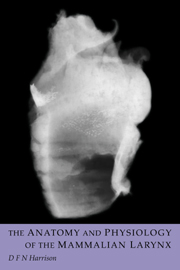1 - Introduction
Published online by Cambridge University Press: 05 October 2010
Summary
The development of comparative anatomy has been neither progressive nor continuous. Progress has been halted by intellectual stagnation, by failure to capitalize on earlier discoveries and by religious and political intolerance. Rarely can major advances be attributed to individuals but are usually the outcome of centuries of human endeavour. The eight centuries of Greek objectivity were followed by a period of scientific and artistic stasis which lasted for more than a thousand years.
It is unclear as to whether the earliest studies of animal anatomy were based primarily on a desire to study animal structure per se, or because of a hope that light might be thrown on the morphology of man. Animal dissections by both zoologists and anatomists date at least from the time of Aristotle (c. 384 BC) and reveal an objectivity common with other facets of Greek culture. However, the foundations for much of this scientific thought were developed in the earlier civilizations of Babylon and Egypt and were then developed by Greek philosophers primarily to assist and explain human problems. Aristotle's contributions to both zoology and comparative anatomy were extensive and his History of Animalsy the Parts of Animals and the Generation of Animals establish him beyond question as the founder of the biological sciences. Descriptions of the nictitating membrane of the eye, os cordis of the horse and ox and the os penis found in many carnivores were based upon his own dissections, although subsequent errors in translations of his works have seriously reduced our knowledge of the actual number of animals Aristotle studied.
- Type
- Chapter
- Information
- The Anatomy and Physiology of the Mammalian Larynx , pp. 1 - 18Publisher: Cambridge University PressPrint publication year: 1995
- 4
- Cited by

